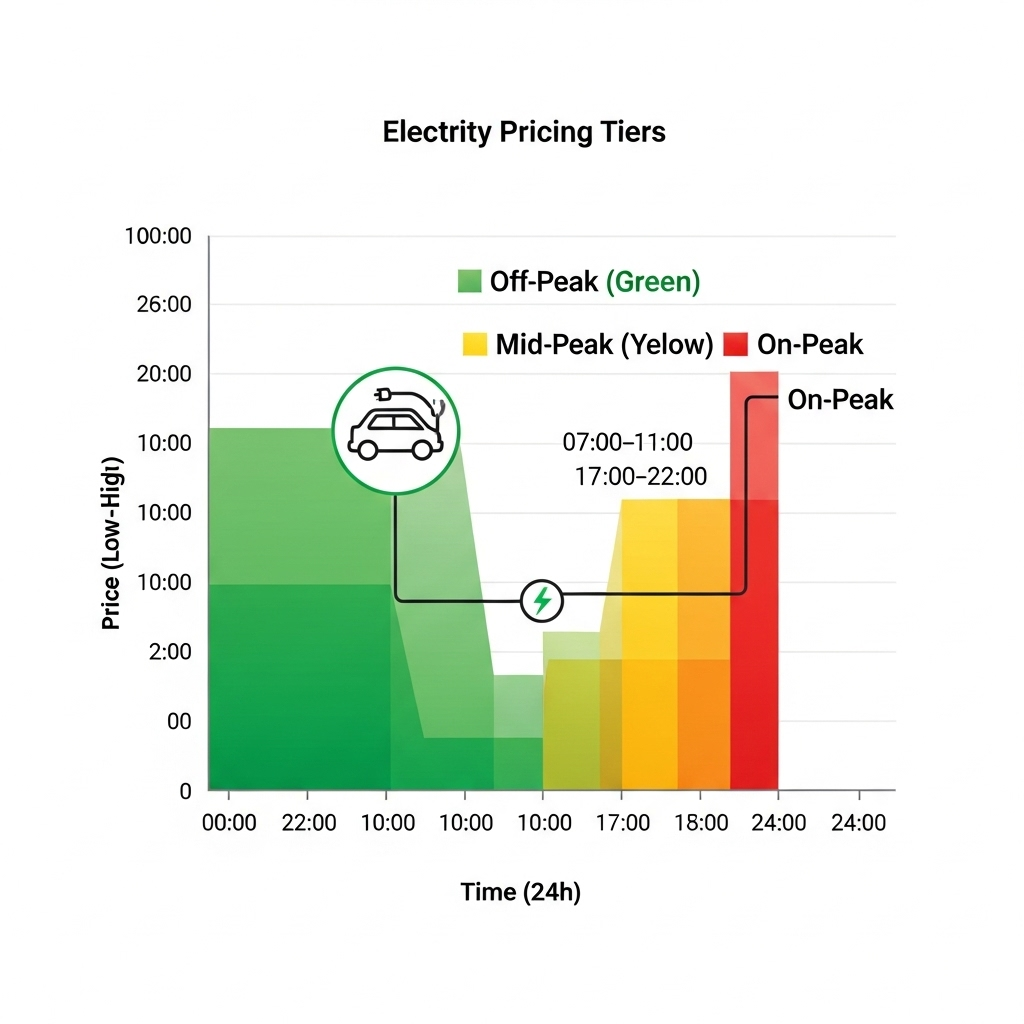As electricity grids face increasing strain from new demands, utilities are seeking innovative solutions. Non-Wires Alternatives (NWAs) represent a significant shift in distribution planning, using distributed energy resources (DERs) to solve grid constraints without building traditional infrastructure. At the heart of this evolution are smart inverters, and their compliance with the IEEE 1547 standard is the key that unlocks their full potential.
What are Smart Inverters and Why Do They Matter for NWAs?
Smart inverters are the intelligent gatekeepers for distributed energy resources like solar panels and battery storage. They are fundamental to the success of any NWA strategy, transforming passive energy sources into active grid assets.
Beyond Simple Conversion
A basic inverter's job is straightforward: convert the direct current (DC) from solar panels or batteries into alternating current (AC) for use in homes and on the grid. A smart inverter does much more. It possesses advanced functionalities, including two-way communication and autonomous grid support. These capabilities allow it to actively manage voltage, respond to frequency changes, and provide real-time data, which are all critical for maintaining a stable and reliable power grid.
Enabling Non-Wires Alternatives
An NWA is a solution that uses non-traditional assets like solar, energy storage, or demand response to defer or eliminate the need for costly grid upgrades, such as new substations or power lines. Smart inverters make this possible by allowing a fleet of DERs to be coordinated and dispatched like a single, virtual power plant. For instance, instead of building a new transformer to handle peak afternoon demand, a utility can use an NWA where smart inverters on local solar and storage systems are instructed to inject power or absorb excess energy, effectively balancing the local grid.
Decoding IEEE 1547: The Standard for Interconnection
For smart inverters to function as reliable grid assets, they must operate under a unified set of rules. The IEEE 1547 standard provides this essential framework for interconnecting DERs with the electric power system.
The Evolution of Interconnection Rules
Early versions of IEEE 1547 were primarily concerned with safety, mandating that DERs disconnect from the grid during any disturbance. This 'trip-and-see' approach was suitable for a grid with low DER penetration. However, the modern grid requires DERs to actively participate in maintaining stability. The updated IEEE 1547-2018 standard reflects this shift, requiring inverters to 'ride through' minor disturbances and provide active support. As highlighted in the Grid Codes for Renewable Powered Systems report by IRENA, this standard is a prime example of international efforts to harmonize grid code requirements for renewables.
Key Technical Requirements for NWA Compliance
IEEE 1547-2018 specifies several grid-support functions that are vital for NWA applications:
- Voltage Regulation (Volt-VAR): Smart inverters can autonomously adjust their reactive power output to counteract voltage fluctuations on the local circuit. This helps maintain power quality and allows for higher penetration of solar energy without causing instability.
- Frequency Support (Freq-Watt): During a grid-wide event that causes frequency to drop or rise, compliant inverters automatically adjust their active power output to help stabilize the grid. This rapid response is critical for preventing broader outages.
- Ride-Through Capabilities: Inverters must remain connected during minor voltage and frequency deviations. This prevents a scenario where a small grid event causes a massive loss of generation from thousands of DERs disconnecting simultaneously. According to a U.S. Department of Energy report, standardized testing protocols for these functions give utilities confidence in their performance.
The Importance of Standardized Testing
Defining functions is only half the battle; verifying them is just as important. The UL 1741 Supplement B (SB) provides the test procedures for certifying that an inverter meets the advanced functions outlined in IEEE 1547-2018. Facilities like the National Renewable Energy Laboratory’s (NREL) Energy Systems Integration Facility conduct this rigorous testing. As noted in an IRENA publication on quality infrastructure for smart mini-grids, pre-certification testing at such facilities ensures that devices will perform reliably once deployed in the field.
Practical Implementation: Smart Inverters in NWA Projects
With a clear standard in place, utilities and developers can confidently integrate smart inverters into their distribution planning and NWA projects.
Distribution Planning and System Performance
Utilities can now use sophisticated software to model the behavior of IEEE 1547-compliant DERs. This allows them to accurately predict how an NWA will perform under various conditions, providing a quantifiable alternative to traditional infrastructure investment. The performance of the underlying assets is paramount. For example, the economic feasibility of an NWA heavily depends on the battery's Round-Trip Efficiency (RTE) and usable capacity. As detailed in this comprehensive guide on solar storage performance, a storage system with a 95% RTE delivers significantly more value for grid services than one operating at 85%, as less energy is lost in each charge/discharge cycle.
A Look at Harmonic Distortion
All power electronics, including inverters, can introduce harmonic distortion into the grid, which can affect power quality. The IEEE 1547 standard, along with IEEE 519, sets strict limits on the amount of distortion an inverter can generate. Compliant smart inverters are engineered to operate well within these limits, ensuring they are 'good citizens' on the grid.
| Harmonic Order (h) | Individual Harmonic Distortion Limit (% of fundamental) | Total Harmonic Distortion (THD) Limit |
|---|---|---|
| h < 11 | 4.0% | 5.0% |
| 11 ≤ h < 17 | 2.0% | |
| 17 ≤ h < 23 | 1.5% | |
| 23 ≤ h < 35 | 0.6% |
Note: These are example limits based on common utility requirements aligned with IEEE standards. Actual limits may vary by jurisdiction.
The Future of Grid Modernization
The combination of smart inverters and clear standards is a foundational step. The technology continues to evolve, promising even greater capabilities for grid management.
From Grid-Following to Grid-Forming
Most smart inverters today are 'grid-following,' meaning they rely on an existing grid signal to operate. The next frontier is 'grid-forming' inverters. These advanced devices can generate their own stable grid signal, allowing them to create resilient microgrids that can operate independently during a utility outage. This capability is a game-changer for critical facilities like hospitals and for communities seeking greater energy independence.
Interoperability and Communication
For an NWA to be effective, a utility must be able to communicate with hundreds or thousands of individual DERs. Standardized communication protocols, such as IEEE 2030.5, are essential for ensuring interoperability between inverters from different manufacturers and the utility's control systems. IRENA's research emphasizes that such international standards are fundamental to creating a scalable and cohesive smart grid ecosystem.
Paving the Way for a Flexible, Resilient Grid
Smart inverters are far more than simple power converters; they are the intelligent building blocks of the modern grid. Their ability to provide active grid support, enabled by compliance with the IEEE 1547 standard, makes them indispensable for the successful deployment of Non-Wires Alternatives. By leveraging these technologies, utilities can defer costly and time-consuming infrastructure projects, better integrate renewable energy, and build a more flexible, cost-effective, and resilient electricity network for everyone.
Frequently Asked Questions
Is every new solar inverter a 'smart inverter'?
Not necessarily. A 'smart inverter' specifically refers to an inverter with advanced grid-support functions like voltage and frequency regulation, which are defined by standards like IEEE 1547-2018. While many modern inverters include these features, it is important to verify compliance and certification (e.g., UL 1741 SB).
Can older solar systems be upgraded with smart inverters?
Yes, in many cases, an older solar installation can be retrofitted with a new smart inverter. This can make the system eligible for new utility programs or NWA projects. However, it requires careful assessment of the existing system's compatibility and may involve additional component upgrades.
What is the difference between IEEE 1547 and UL 1741?
IEEE 1547 is the interconnection *standard*. It defines *what* a distributed energy resource (DER) must do to connect to the grid safely and effectively. UL 1741 is a *safety and testing standard*. It provides the procedures for *how* to test and certify that an inverter meets the requirements laid out in IEEE 1547.





Leave a comment
All comments are moderated before being published.
This site is protected by hCaptcha and the hCaptcha Privacy Policy and Terms of Service apply.